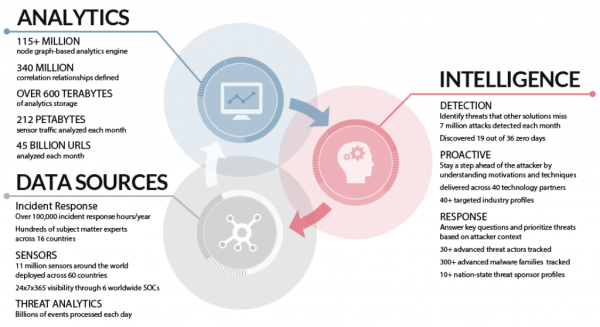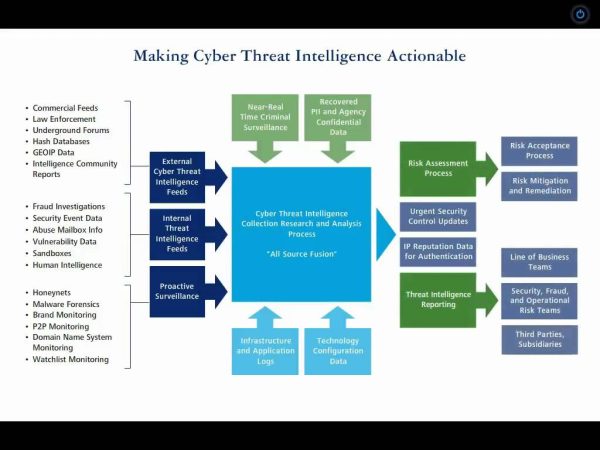
CTI involves collecting, analyzing, and disseminating valuable information about potential cyber threats.
This thorough manual will examine the critical cyber threat intelligence requirements organizations must consider bolstering their security posture.
Let’s explore the world of CTI and equip ourselves with the knowledge needed to stay one step ahead of cyber adversaries. They were understanding Cyber Threat Intelligence Requirements.
Related Post: Cyber Threat Intelligence Careers
Define Cyber Threat Intelligence (CTI)
CTI helps organizations understand the tactics, techniques, and procedures (TTPs) used by threat actors, their motivations, and the potential impact of an attack.
By translating raw data into actionable insights, CTI enables enterprises to act proactively and, with knowledge, defend against cyber threats.

The Importance of Cyber Threat Intelligence
Cyber threats have become more sophisticated and pervasive in today’s interconnected world. Traditional security precautions are no longer adequate to safeguard against advanced threats. CTI provides several critical advantages, including:
a. Proactive Defense: CTI enables organizations to foresee threats and prepare for them before they happen, allowing for a proactive defense strategy.
b. Risk Mitigation: By understanding the specific threats and vulnerabilities that pose risks to the organization, CTI helps prioritize security efforts and resource allocation.
c. Incident Response Improvement: In the event of a cyber incident, CTI provides valuable insights to respond swiftly and effectively, minimizing damage and downtime.
d. Threat Actor Profiling: CTI helps in profiling threat actors and understanding their motives, tactics, and targets, aiding in identifying potential attack vectors.
e. Compliance and Regulatory Requirements: Many industries have specific cybersecurity regulations, and CTI assists in meeting compliance obligations.
See here: Cyber Threat Intelligence Salary
Essential Cyber Threat Intelligence Requirements
To establish an effective CTI program, organizations must address the following essential requirements:
Data Collection
The foundation of CTI lies in data collection. Organizations must gather data from various sources, including internal logs, external threat feeds, open-source intelligence (OSINT), and specialized threat intelligence platforms.
Data Analysis and Contextualization
Raw data is of limited value without proper analysis and contextualization. The data must be processed, correlated, and enriched to provide actionable intelligence.
Timeliness
Cyber threats evolve rapidly, so timely intelligence is critical. Organizations need real-time or near-real-time information to respond promptly to emerging threats.
Accuracy and Validity
Ensuring the accuracy and validity of the intelligence is essential. False or inaccurate information can lead to misguided decisions and wasted resources.
Relevancy and Customization
Not all threats are relevant to every organization. CTI should be tailored to the organization’s industry, infrastructure, and threat landscape.
Threat Actor Attribution
While challenging, understanding threat actor attribution can provide valuable insights into their motivations and potential targets.
Collaboration and Sharing
Organizational boundaries do not limit cyber threats. Sharing CTI with trusted partners and participating in threat-sharing communities can enhance cybersecurity efforts.
Integration with Security Tools
CTI should integrate seamlessly with existing security tools and systems, enriching them with actionable intelligence.
Continuous Monitoring and Updating
Cyber threats are dynamic and continuously evolving. CTI programs must include ongoing monitoring and updating to remain effective.
Sources of Cyber Threat Intelligence
CTI is derived from various sources, each contributing unique insights into the threat landscape:
Open-Source Intelligence (OSINT)
OSINT entails gathering data from open sources, including websites, social media, forums, and news articles. OSINT provides a wealth of information on potential threats and threat actors.
External Threat Feeds
Commercial threat intelligence providers offer subscription-based services that deliver real-time threat information from their global network of sensors and sensors.
Internal Data
Organizations can leverage their internal logs, incident reports, and security event data to identify potential threats and patterns.
Dark Web Monitoring
Monitoring the dark web might inform you about cybercriminal activities, black markets, and emerging threats.
Information Sharing and Analysis Centers (ISACs)
ISACs are industry-specific forums where organizations collaborate and share CTI to improve collective cybersecurity.
Government Agencies
Government agencies often release cybersecurity advisories and alerts to help organizations defend against specific threats.
Check out: Best Paying Jobs in Computer Software Prepackaged Software
Establishing a robust CTI program requires careful planning and execution
Define Objectives
Define the objectives and goals of the CTI program in detail. Align them with the organization’s overall cybersecurity strategy.
Identify Stakeholders
Identify key stakeholders, such as IT security teams, management, and incident response teams, who will play essential roles in the CTI program.
Allocate Resources
Allocate the necessary budget, personnel, and technology to support the CTI program effectively.
Partner with CTI Providers
Engage with reputable CTI providers and explore partnerships with other organizations for threat sharing.
Establish Information Sharing Protocols
Develop protocols and frameworks for sharing and receiving CTI with partners and industry peers.
Train and Educate
Train employees on how to interpret and utilize CTI effectively. Awareness and education are crucial for the success of the CTI program.
Review and Improve
Regularly review the effectiveness of the CTI program, gather feedback, and make improvements as needed to stay ahead of evolving threats.
Conclusion
Cyber Threat Intelligence is a powerful tool that helps organizations anticipate, detect, and respond to cyber threats effectively. Organizations can establish a proactive and robust cybersecurity posture by meeting the critical requirements of CTI and leveraging various intelligence sources.
Continuous monitoring, collaboration, and customization are essential to a successful CTI program.
As cyber threats continue to evolve, implementing a comprehensive CTI program is no longer a luxury but a necessity for any organization seeking to protect its assets, data, and reputation in the digital age.

Leave a Reply